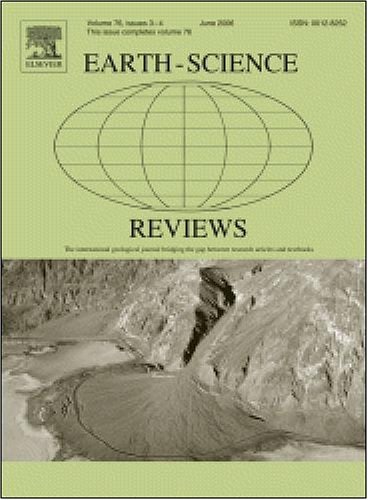Deciphering Paleogene platforms from a “Lost Domain” in the Western Neo-Tethys
IF 10
1区 地球科学
Q1 GEOSCIENCES, MULTIDISCIPLINARY
引用次数: 0
Abstract
According to classical literature, two Paleogene platforms developed along the northern and southern margins of the Neo-Tethys Ocean. Similar platforms have been recognized on the southern margin of a “lost domain” consisting of an independent microplate known as the “Mesomediterranean Microplate” (MM) in the westernmost Neo-Tethys Ocean. This microplate underwent tectonic dismantling and drifting during the opening of the western Mediterranean. The individualized blocks collided with the European and African palaeomargins during the Miocene, forming the Neo-Alpine chains of the western Mediterranean. The regional reconstruction and lateral correlation of Paleogene deposits have provided valuable insights into the paleogeographic and geodynamic evolution of this lost domain. The most representative Paleogene successions lie unconformably over the Palaeozoic basement and Mesozoic sedimentary cover. The sedimentary evolution, source areas, peleoclimate and palaeoenvironments recognized along the Betic and Maghrebian (Rif, Tell, Calabria-Peloritani Arc) chains have also been compared. Reconstructions of the MM using GPlates software have placed the original position of these platforms approximately at 30° N, and between 5°W and 10°E. Along the southern border of this microplate, a northward transition towards continental areas and a southward transition into deeper marine domains were identified. Additionally, distinctions were made between areas with complete Paleogene successions and those with condensed successions, as well as between carbonate-dominated and siliciclastic-dominated platforms.
解读新特提斯西部“失落领域”的古近系平台
根据古典文献,在新特提斯洋的南北边缘发育了两个古近纪台地。在新特提斯洋最西端的一个由独立微板块组成的“地中海微板块”(MM)的“失落域”的南缘,也发现了类似的平台。这个微板块在西地中海打开期间经历了构造解体和漂移。在中新世,这些独立的板块与欧洲和非洲的古边缘碰撞,形成了西地中海的新阿尔卑斯链。古近系沉积的区域重建和横向对比为这一失落区域的古地理和地球动力学演化提供了有价值的认识。最具代表性的古近系序列位于古生代基底和中生代沉积盖层之上。比较了北海和马格里布(Rif、Tell、Calabria-Peloritani Arc)链的沉积演化、源区、古气候和古环境。使用GPlates软件重建的MM将这些平台的原始位置放置在大约30°N, 5°W和10°E之间。在微板块的南部边界,向北过渡到大陆地区,向南过渡到较深的海洋域。此外,还区分了古近系完整地序区和密集地序区,以及碳酸盐岩为主的台地区和硅质体为主的台地区。
本文章由计算机程序翻译,如有差异,请以英文原文为准。
求助全文
约1分钟内获得全文
求助全文
来源期刊

Earth-Science Reviews
地学-地球科学综合
CiteScore
21.70
自引率
5.80%
发文量
294
审稿时长
15.1 weeks
期刊介绍:
Covering a much wider field than the usual specialist journals, Earth Science Reviews publishes review articles dealing with all aspects of Earth Sciences, and is an important vehicle for allowing readers to see their particular interest related to the Earth Sciences as a whole.
 求助内容:
求助内容: 应助结果提醒方式:
应助结果提醒方式:


